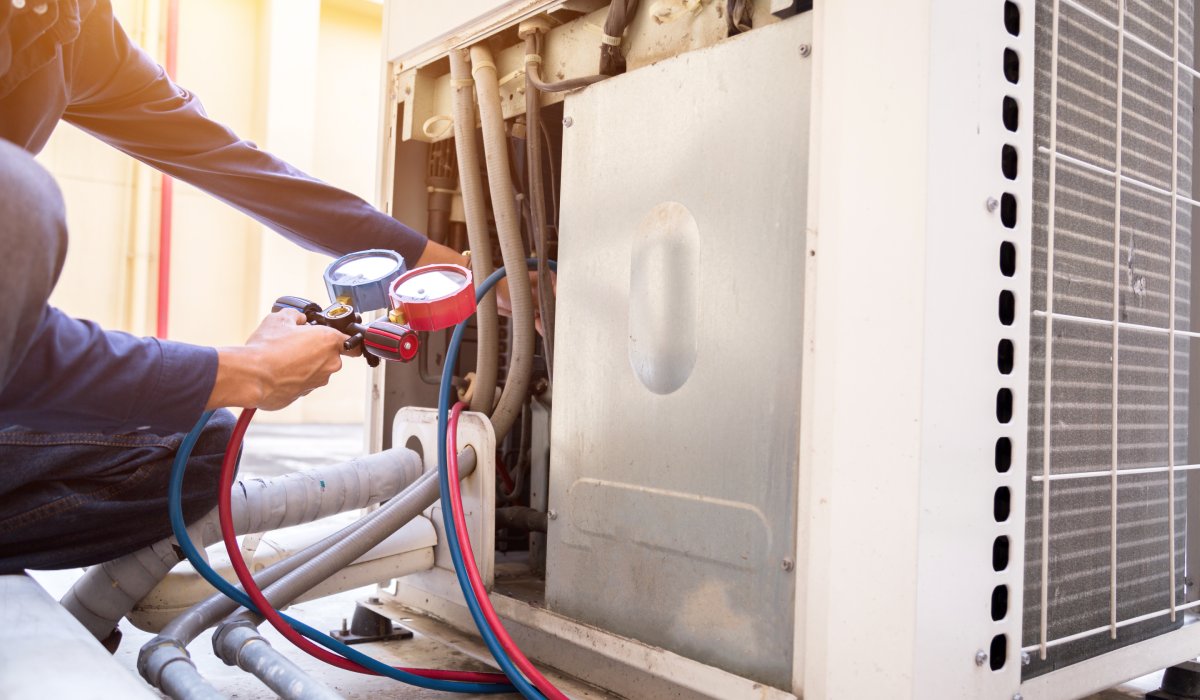Choosing the right cooling system for your home is a significant decision that impacts your comfort and budget for years. Two popular options dominate the market: mini split systems and central air conditioning. While both effectively cool your living space, they operate differently and offer distinct advantages. Understanding these differences is the first step toward making an informed choice that suits your home’s layout, your family’s needs, and your financial goals.
This guide will explore the differences between mini splits and central air conditioning systems. We will explore how each system functions, weigh their respective pros and cons, and compare them on crucial factors like installation, maintenance, energy efficiency, and overall cost. By the end, you will have a clear understanding of which air conditioning system is the best fit for your home, allowing you to invest wisely in your comfort.
How Mini Split Systems Work
A mini split system offers zoned cooling by utilizing two primary components—an outdoor unit with a compressor and one or more indoor air-handling units. These components are linked by a narrow conduit that contains the power cable, refrigerant lines, and a drain for condensate. This setup removes the requirement for extensive ductwork, making it a key characteristic of this type of system.
The outdoor unit works by drawing in warm air from outside and cooling it via the refrigerant. This air then travels through the conduit to the indoor units. Each indoor unit, mounted on a wall or ceiling in a specific room or “zone,” distributes the cool air directly into that space. Because each indoor handler has its own thermostat, you can independently control the temperature of individual rooms. This zone-based control allows you to cool only the areas you are using, offering a high degree of flexibility and potential for energy savings.
How Central Air Systems Work
Central air conditioning systems cool your entire home uniformly using a network of ducts. The system consists of an outdoor condenser unit and an indoor evaporator coil, which integrates with your home’s furnace or air handler. The process begins when the system pulls warm indoor air through return vents and passes it over the cold evaporator coil. The refrigerant inside the coil absorbs the heat, cooling the air.
Once cooled, the air is pushed through the supply ducts by a blower and distributed to various rooms via vents. The system’s thermostat, usually located in a central part of the house, regulates the temperature for the entire home. When the thermostat detects that the indoor temperature has risen above the set point, it signals the system to start another cooling cycle. This centralized approach provides consistent cooling throughout the house, maintaining a single, stable temperature in every room connected to the ductwork.
Mini Split Systems: Pros and Cons
Ductless mini splits offer several compelling advantages. Their primary benefit is the ability to provide zoned cooling, which allows you to set different temperatures in different rooms. This feature can lead to significant energy savings, as it avoids cooling unoccupied spaces. The installation process is also less invasive and generally quicker than that of central air because it does not require ductwork. Many homeowners also appreciate that mini split systems operate very quietly.
However, mini splits also have some drawbacks. The initial cost for a multi-zone system can be high, sometimes exceeding the price of a central air unit. The indoor air-handling units are visible on the walls or ceilings, which some people find aesthetically unappealing. Furthermore, each indoor unit has its own filter that requires regular cleaning or replacement, adding to the maintenance workload, especially in homes with multiple units.
Central Air Systems: Pros and Cons
People celebrate central air conditioning for its ability to deliver powerful, uniform cooling to an entire house. Once installed, the system is largely invisible, with only subtle vents in the walls, floors, or ceilings. This invisibility makes it a visually unobtrusive option. A single thermostat controls the whole system, simplifying operation. If your home already has ductwork from a forced-air heating system, installing central air can be relatively straightforward and cost-effective.
On the other hand, central air lacks the flexibility of zoned cooling, meaning you cool the entire house even if you are only using a few rooms. This inflexibility can result in higher energy consumption and increased utility bills. The installation can be a major and expensive project if your home does not have existing ductwork. Additionally, ducts can accumulate dust and allergens over time, potentially compromising indoor air quality if not properly maintained.
Installation and Maintenance
The installation process for mini split and central air systems differs significantly. A mini split installation involves mounting the indoor unit, placing the outdoor compressor, and drilling a small, three-inch hole through the wall to connect them with the conduit line. This process makes it a versatile option for older homes, new additions, or spaces without existing ducts. Central air installation is more complex and invasive, particularly if the house requires new ductwork. This process involves cutting into walls and ceilings to run the ducts, a process that can be lengthy and disruptive.
Maintenance requirements also vary. Central air systems have a single filter, typically located near the indoor air handler, that needs to be changed every one to three months. Don’t forget to clean the ductwork professionally every few years. For mini splits, each indoor unit has its own filter that needs monthly cleaning. Both systems require an annual professional inspection of the outdoor condenser to keep them running efficiently.
Energy Efficiency and Cost
When it comes to energy efficiency, mini split systems often have an edge. By allowing you to cool specific zones, they prevent energy waste associated with cooling empty rooms. This targeted approach can lead to substantial savings on your electricity bills. Central air systems can consume more energy. Furthermore, energy can be lost through leaks in the ductwork, reducing the overall efficiency of a central system.
Cost is another critical factor. The upfront price of a central air system can be lower than that of a multi-zone mini split system, especially if your home already has ductwork. However, if your house requires ductwork, the cost can rise dramatically. Mini split installation costs depend on the number of indoor units you need. While the initial investment might be higher for a comprehensive mini split setup, the long-term energy savings can often offset this initial expense over the system’s lifespan.
Finding Your Perfect Match
Deciding between a mini split system and central air conditioning comes down to your specific circumstances. If you are building a new home or live in a house with existing ductwork and prefer consistent, whole-home cooling, central air is an excellent choice. It offers a simple, powerful, and aesthetically discreet solution.
Conversely, a mini split system is ideal if you live in an older home without ducts, are building an addition, or want to have precise temperature control over individual rooms. It is also a great option for those prioritizing energy efficiency and long-term savings. Consider your home’s layout, your budget for both installation and ongoing operation, and your personal comfort preferences to guide your final decision. Consulting with an HVAC professional can also provide personalized recommendations to help you select the best system for your home.









